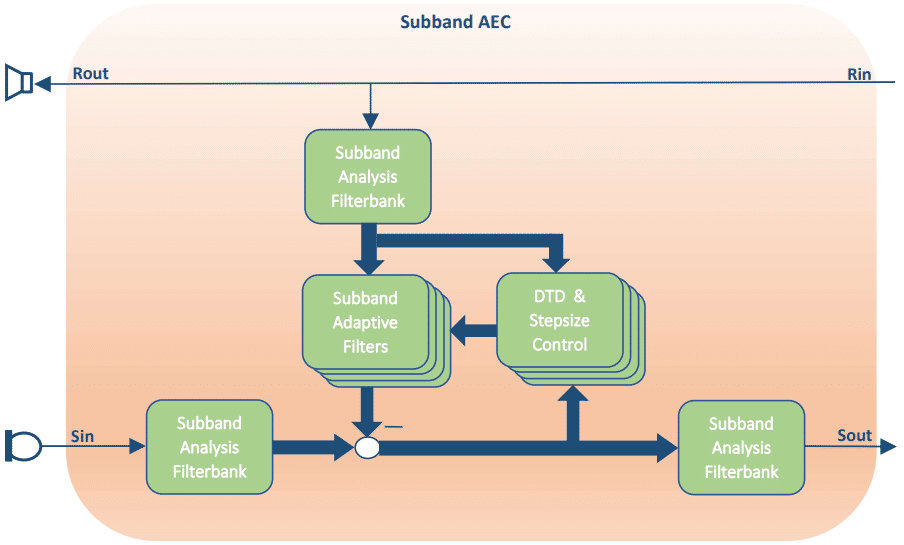Subband adaptive filters (SAF) are commonly applied to acoustic echo cancellation (AEC) software solutions because they provide better steady-state convergence for LMS type adaptive algorithms over their time domain counterparts with reduced computational complexity. The subband transformation decimates and splits a fullband signal into multiple subband signals. Then adaptive filtering is applied in each subband independently. The variable stepsize control, double-talk detection (DTD) and non-linear processing (NLP) of residual echoes can also be applied independently.
This independent control provides many advantages, but there are some potential unintended consequences to the fullband signal. Due to the increased frequency resolution, the instantaneous power estimates of subband signals have a greater variance over fullband power estimates for a given time interval. This increased fluctuation can decrease the accuracy of a double-talk detector and the NLP can produce musical noise artifacts in the synthesized time domain signal. Introducing smoothing can help, but also slows the reaction time of the echo canceller. One of the best ways to aid a subband echo canceller’s adaptive filter control logic and NLP is to use fullband or multiple bands of information to influence subband decisions.
For example, given a 32 subband AEC, if 28 of 32 subband have detected doubletalk, how likely is that the other 4 bands are also under presence of doubletalk? Very likely, therefore, we can use a super majority decision to prevent adaptation on the subbands that previously did not detect doubletalk. The same line of thinking can be used with the NLP. As the number of subbands applying attenuation to the residual echo signal increases, as does the probability of the signal being echo. We then can apply further attenuation to the remaining subband signals that would result in music noise. By applying fullband information to the subband process the overall performance of an echo canceller can be improved.
More Information
- Echo Cancellation Overview
- Echo Canceller Design
- Stereo Acoustic Echo Cancellers
- Sub-Band Acoustic Echo Cancellation
- Combined Line and Acoustic Echo Canceller
- Acoustic Echo Canceller and Noise Reduction Combined
- Challenges of Wideband Acoustic Echo Cancellation
- Acoustic Echo Diagnostics
Platforms
VOCAL’s optimized Echo Cancellation software is available for the following platforms. Please contact us for specific Echo Cancellation supported platforms.
| Processors | Operating Systems |
|---|---|
|
|
